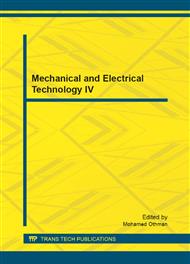p.1984
p.1990
p.1994
p.1998
p.2002
p.2007
p.2010
p.2015
p.2019
An Improved Directed Acyclic Graph Support Vector Machines Based on Inter-Cluster Separability Measure in Feature Space
Abstract:
For disadvantage of the methods that are used to evaluate inter-cluster separability measure, a novel separability measure is proposed and applied to directed acyclic graph support vector machine. The distance between cluster centers and distribution of samples in feature space are both considered by the algorithm. Firstly, use hyper-sphere support vector machine to obtain minimal bounding hyper-sphere of each cluster, according to the radius and centers of minimal bounding hyper-spheres, introduce the concept of inter-cluster separability measure in feature space, get the matrix of inter-cluster separability measure according to the concept, finally construct the directed acyclic graph according to the matrix. The experimental results show that the algorithm has higher classification precision, comparing with old directed acyclic graph support vector machine.
Info:
Periodical:
Pages:
2002-2006
Citation:
Online since:
November 2012
Authors:
Price:
Сopyright:
© 2012 Trans Tech Publications Ltd. All Rights Reserved
Share:
Citation:


